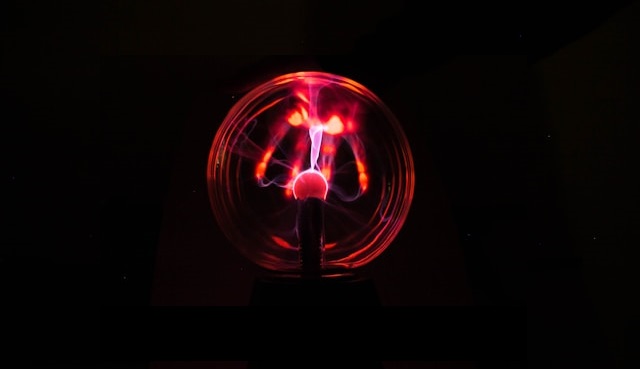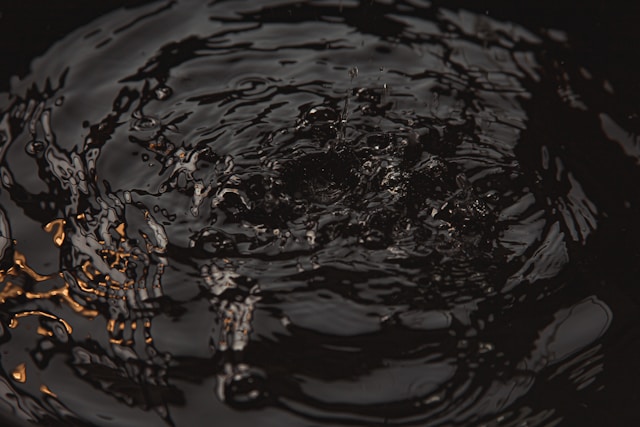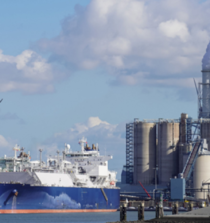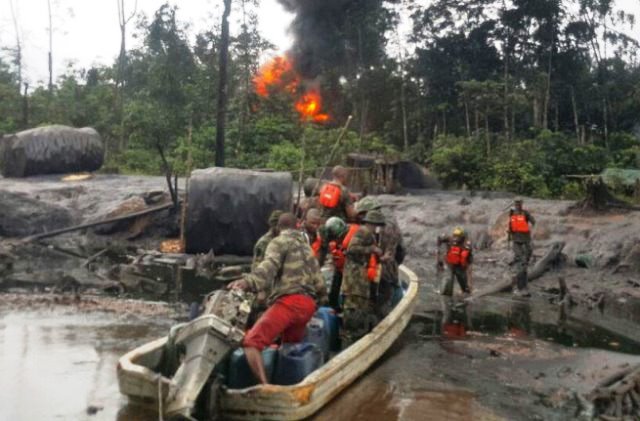By Paul Hickin
The region’s rapidly evolving infrastructure has a lot to be commended for, but some of the capacity may not be ready in time for the 2024 heating season
Europe’s gas strategy lies somewhere between revolution and evolution: this was the message from Petroleum Economist’s European Gas Strategy event in London in November. A reconfiguration of flows towards the US and other sources of LNG suggests revolution, but not having fully weaned off Russian pipeline gas signals evolution.
A rapid shift in new capacity again points to a seismic shift in approach, but the fact that many of the new units are floating facilities points to flexibility and optionality. A lot of the buying behaviour has been due to market forces, but policymakers have been much more involved in projects and storage. Some of the political moves to build out infrastructure have been decisive for some, but others have been caught up in policy inertia. Europe’s balancing act leaves it well-positioned going into winter, but lingering doubts over its preparedness mean there is still a risk of falling short should the weather be less friendly than in 2023.
Carole Nakhle, CEO of Crystol Energy, provided a reminder that the energy crisis of 2022 highlighted the ability of gas to quickly respond to volatility. “While 2022 is described as the ‘most turbulent year in history of gas’, it has also revealed interesting dynamics that have long been in the making.”
“There is more government and state involvement in the LNG sector than ever before” Howell, King & Spalding
“When gas prices spiked in Europe last year, it was a question of months before LNG tankers were queuing at European terminals. That ‘most severe’ crisis dissipated within months—an unimaginable outcome only a few years ago,” she added. Europe had already been looking at backup plans well before the Russia shock.
“One thing I have seen over the past few years that has been unprecedented is there is more government and state involvement in the LNG sector than ever before,” said Nina Howell, partner at law firm King & Spalding.
“Historically, the development of LNG projects—and it is always import projects in Europe —has been market driven. There are a couple of exceptions, but since the Russian invasion of Ukraine, governments have been getting involved strategically in projects and that has been a massive contribution to developing the LNG sector and its security of supply,” Howell added.
But that does not discount the role of market forces, with James Waddell, head of European gas analysis at consultancy Energy Aspects, pointing out that “this year you have not needed state intervention as there has been a huge contango in the market to drive a massive amount of gas into storage over the course of the European summer.”
“The market itself has done a lot of the work in guaranteeing its own security of supply,” he added.
Howell also explained how the European policy approach has been both smart and flexible. “While a lot of the debate has been around whether European has committed to too much additional capacity, what is often missed is that a lot of the new capacity is through floating facilities—FSRUs—and the life of the projects can be dictated by market demand.”
FSRUs are chartered for a certain period rather than bought outright, while onshore projects have a high capex so will take a long time—10–15 years—to recover costs, Howell explained. Most of the new European FSRUs are now online following the initial panic, with just a couple of expansions planned, while the onshore projects are much longer term.
Infrastructure buildout
But Global Energy Infrastructure (GEI) was a little less sanguine. “The big rise in Europe’s LNG imports since 2022 has meant Europe’s infrastructure has been pushed to the limit,” noted Seth Haskell, a research analyst at GEI. The epicentre of this congestion has been Northwest Europe, the continent’s largest gas market by far. The Benelux countries, Germany, and France made up close to 40% of European gas demand in 2022, according to GEI data.
“Northwest Europe was also unusually poorly prepared to switch up its gas supply. The region had relatively little LNG capacity available to replace Russian gas,” he added. Northwest Europe had about 62bcm/yr of LNG import capacity at the start of 2022, enough to support about 40% of its gas demand. Compare this to Spain or the UK, which had LNG receiving capacity to support 175% and 66% of their demand, respectively.
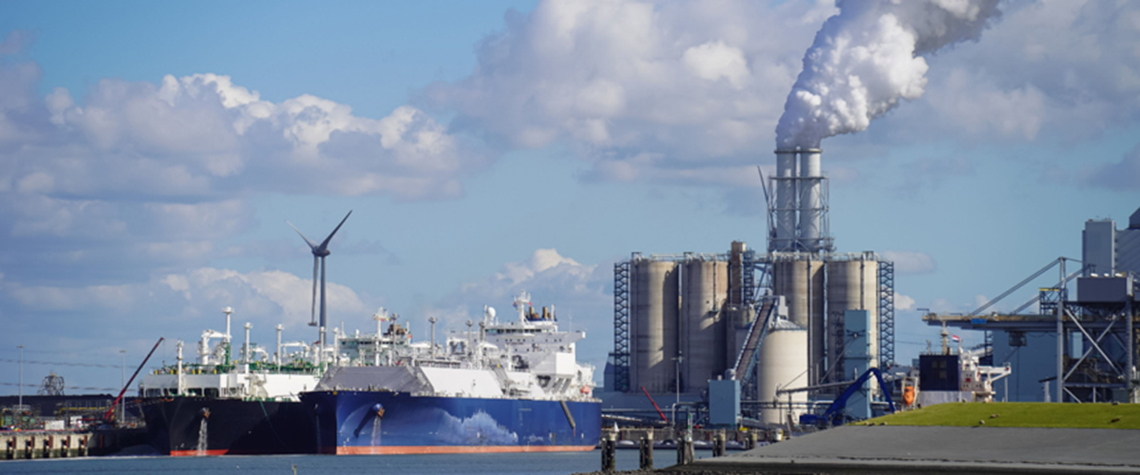
“The market itself has done a lot of the work in guaranteeing its own security of supply” Waddell, Energy Aspects
There was also significant congestion elsewhere on the continent. “Italy’s LNG capacity averaged a 75% utilisation rate over the heating season, and we saw noticeable congestion at the Trans-Adriatic Pipeline (TAP) arrival point near Melendugno, the point where Azeri imports reach Europe. The rest of the EU also saw big jumps in capacity utilisation. These infrastructure limitations were one of the driving forces behind large price spreads between different European gas hubs,” Haskell said.
Since the start of the crisis, Europe has already seen enormous LNG import capacity additions, with more than 40bcm/yr added since February 2022. And this is just the first wave of a larger buildout. While that expansion has slowed and not every project will be built, serious European planned and under-construction projects represent an additional 143bcm/yr of import capacity.
Europe also saw two key pipelines, in development long before 2022, fortuitously being opened last year. The Interconnector-Greece Bulgaria (IGB) has helped bring more Azeri gas into Southeastern Europe. Bulgaria was previously heavily reliant on Russian volumes. And the Baltic Pipe has allowed Norwegian gas to head much more directly to Poland.
Of the new LNG capacity, much of it has been located where it is needed most: three FSRUs have brought more than 18 bcm/yr of capacity to Germany. Italy, Spain, the Netherlands and Finland have also added regasification capacity, and several smaller pipeline projects have been completed to directly support new LNG imports.
The infrastructure situation going into this heating season has improved somewhat as a result. “While Europe has gotten a lot of fair criticism for being over-reliant on Russian supply prior to 2022, the IGB and Baltic Pipe are both projects that were pursued with security of supply in mind,” Haskell explained.
143bcm/yr – Capacity of European planned and under-construction projects
Europe also welcomed and encouraged TAP and the Trans-Anatolian Natural Gas Pipeline, which opened in 2020 and deliver gas from Azerbaijan to Europe with security of supply as a focus. “So, criticism of Europe for being over-reliant on Russia is fair, but I also think it is worth noting the successful security of supply initiatives that have allowed Europe to weather the current crisis as well as it has,” Haskell concluded.
Germany will be adding the most new capacity in Europe. But there will also be significant additions in Poland, Italy and the UK. In Poland, capacity expansion is taking the form of an under-construction extension to the President Lech Kaczynski terminal, expected online in 2024, as well as two planned FSRUs off Gdansk expected in 2027 and 2028. The UK is expanding the 5.4mt/yr Grain terminal and building a new regas facility in Scotland to be operated by Crown LNG.
Germany is adding extra capacity in two tranches in on top of the 18bcm/yr already brought online. The first tranche involves three more FSRUs, which are expected to begin operations in Q1 2024 and represent about 20bcm/yr of import capacity. The second tranche involves three large onshore terminals, targeting startup dates in 2026 and 2027, which could represent close to 40 bcm/yr of extra capacity. These terminals are located at Wilhelmshaven, at the mouth of the Elbe in Brunsbuettel, and near Lubmin, where the Nord Stream pipelines came ashore, to take advantage of capacity built to work with those now-defunct pipelines.
Of the FSRUs, all three were initially expected to be operational by the end of 2023, but all have faced delays that have pushed back the start of operations to Q1 2024. The result is that they are unlikely to play a huge role in meeting German gas demand this heating season, but they will provide significant capacity beyond then.
“The big rise in Europe’s LNG imports since 2022 has meant Europe’s infrastructure has been pushed to the limit” Haskell, GEI
In Italy, where regasification terminals averaged close to 80% utilisation rates over the 2022–23 heating season, only a single, 5.1bcm/yr terminal has become operational since 2022. The Snam-operated Piombino facility uses the FSRU Golar Tundra, now owned by Snam. Further LNG import capacity is planned, but the FSRU Snam is planning to dock off Ravenna is not expected to be operational until November 2024.
A number of other LNG projects have languished across Italy. Most recently, Snam allowed its deal with Golar to provide the Golar Arctic to the proposed Portovesme LNG terminal in Sardinia—which was targeting startup this year—to lapse. The Porto Torres and the Porto Empedocle projects, on Sardinia and Sicily respectively, have also failed to make much progress since February 2022, despite a burst of activity as Italy’s need for additional LNG capacity became clear.
End of the bull cycle
Bank Goldman Sachs’ recent research note sums up Europe’s predicament: “We see 2024 as the last year of the current bull cycle for European gas and LNG, to be followed by a much softer second half of the decade as global LNG supply capacity increases significantly from 2025.”
“The rise in European LNG imports seen over the past couple of years has not come close to fully offsetting the supply gap left in the region by the curtailment of Russian pipeline gas exports, which has also been exacerbated by dwindling Dutch gas production in the same period. On net, Northwest European gas supplies remain 23% down from 2019 levels,” Goldman added.
This underscores the important role European demand cuts have had in balancing the market. As a result, any reduction in (weather-adjusted) household heating conservation efforts—a key driver of gas savings last winter—or improvements in industrial activity, have the potential to quickly tighten European gas balances. That is “a risk we still see in 2024,” Goldman said.

